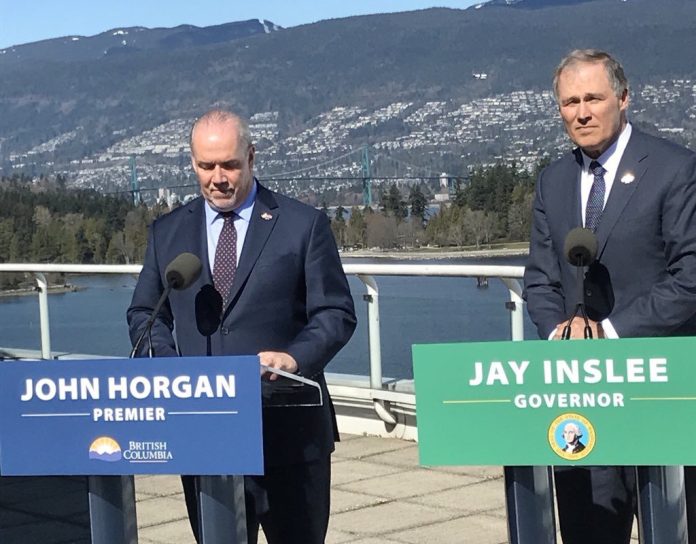On Friday, the British Columbian governments declared support for studying high-speed rail from Vancouver to Portland and building out key transit and transportation projects throughout Vancouver’s Lower Mainland. Governor Jay Inslee (D-Washington) traveled up to Vancouver to join his fellow West Coast governors at the annual Pacific Coast Collaborative conference. The theme of the conference was climate change, environmental protection, and trade–topics that set the stage for big announcements later in the day.
Buying In to High-Speed Rail
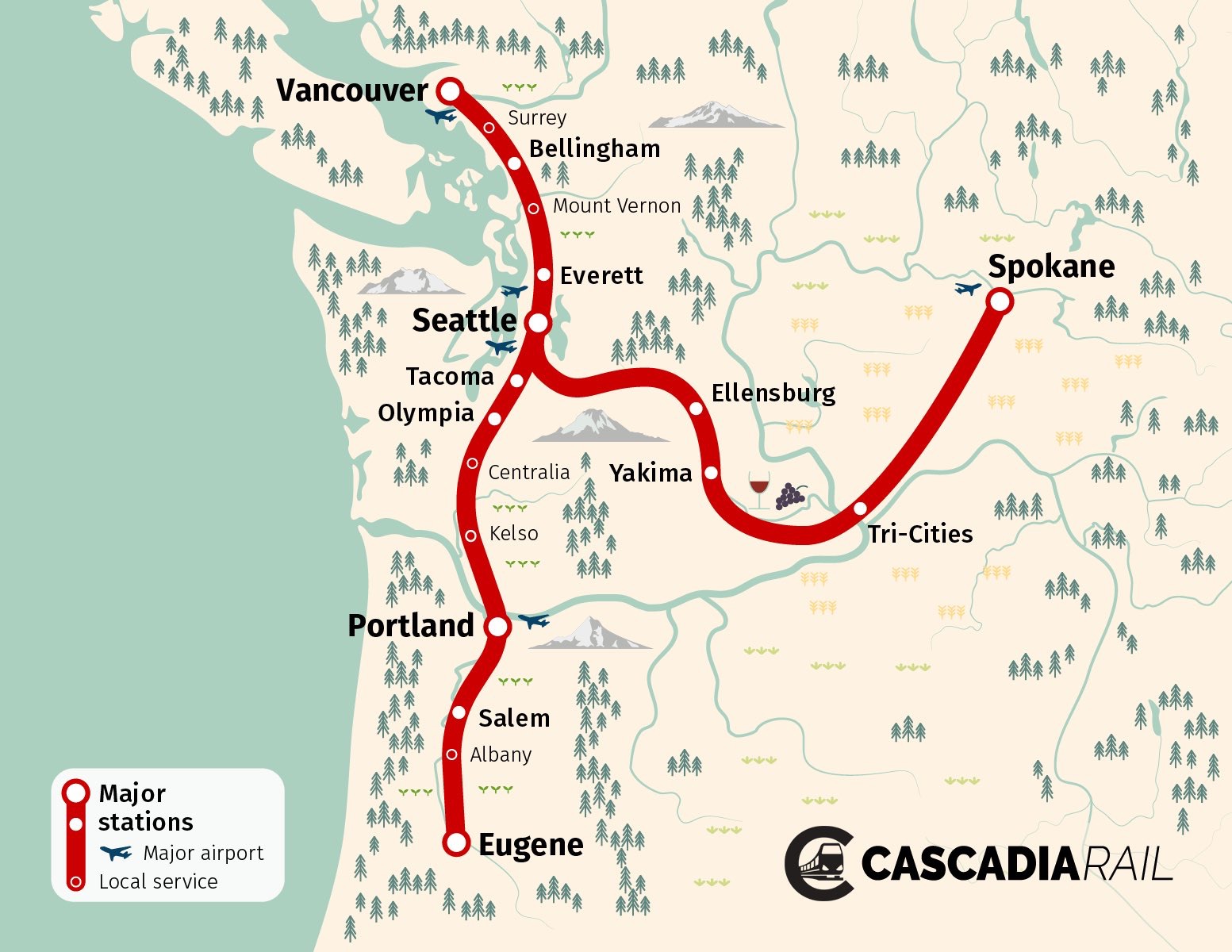
Premier John Horgan (BC NDP-British Columbia), the progressive leader of the province, stood side-by-side with Governor Inslee to announce $300,000 Canadian in provincial funding for the regional high-speed rail business case study.
“The convenience of a one-hour trip between Vancouver and Seattle would create countless opportunities for people in both B.C. and Washington, from sports or concert getaways for families, to untold economic growth potential for businesses,” Premier Horgan said. “Exploring the possibility of creating a clean, efficient high-speed corridor is particularly important as the Pacific Northwest grows in economic importance, and we look to reduce barriers to expansion across our borders.”
Governor Inslee stressed the economic benefits in his remarks.
“This ultra-high-speed corridor is an exciting proposal for both British Columbia and Washington, aligning with our mutual goal of strengthening our economies through collaboration,” Governor Inslee said. “The early study results show the corridor would help create jobs, generate affordable housing options, ease freeway traffic and clean our air. It’s an exciting step for Washington and British Columbia.”
The December feasibility study indicated that high-speed rail could create immense economic benefits to the region, including 201,200 more jobs, a reduction of 40,000 metric tons on carbon emissions, and billions in additional private economic investment annually. Although only about 30 miles of the route would be built within British Columbia, the high-speed rail connection would provide considerable benefits, boosting tourism, providing a recruiting tool for businesses, and easing cross-border business collaboration.
Always great spending time with @GovInslee. The possibility of a high-speed rail corridor means he can visit more often to watch the @Canucks win in person 😉. pic.twitter.com/NgDpqxiLKN
— John Horgan (@jjhorgan) March 16, 2018
British Columbia has already been promised seats at the table for the study and will be a key partner in the effort. A total of $1.2 million has been pledged to the study, primarily by the Washington State Legislature’s $750,000 in direct funding. The Washington State Department of Transportation will be responsible for overseeing the study with a consultant leading the analytical components of it.
All In On Rapid Transit
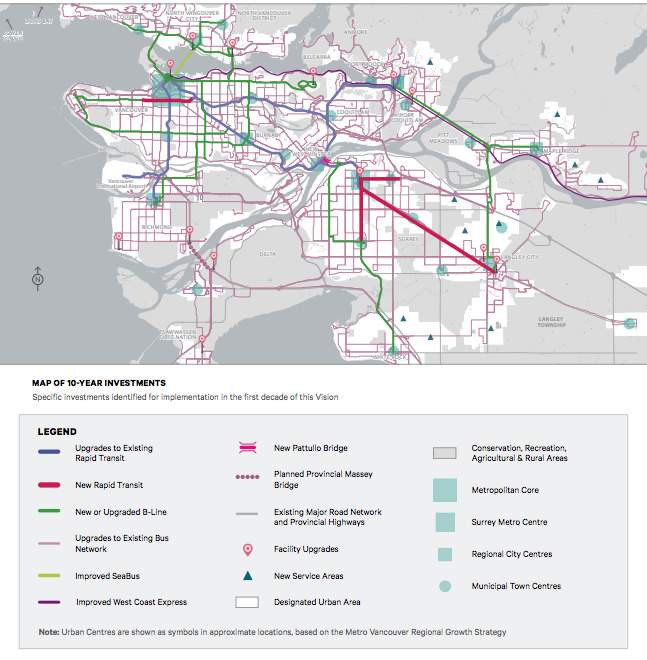
On Friday afternoon, local leaders in Vancouver, including former King County Metro Transit and now TransLink CEO Kevin Desmond, were on hand to unveil a plan to follow through with expansion of SkyTrain, a new light rail line, and several other major projects in the 10-Year Vision regional plan. $7 billion Canadian from local (20%), provincial (40%), and federal (40%) sources will help deliver the Phase Two projects of the 10-Year Vision plan. It is an amazing turn of events given the failure of the 2015 Transit Referendum that lost in a landslide amidst disagreement among many in the regional Mayors’ Council about priorities.
“The region’s mayors have charted a progressive path for our region that will help ensure the effective, efficient movement of people and goods, and maintain our status as one of the world’s most livable cities,” Mr. Desmond said. “TransLink stands ready to deliver on Phase Two improvements that will benefit all people right across our region, regardless of whether you are traveling by car, cycle, transit or on foot.”
Selina Robinson (BC NDP-Coquitlam-Maillardville), Minister of Municipal Affairs and Housing, highlighted the urgency in meeting demand for transportation.
“It is important that we get moving on Phase Two of the Vision as soon as possible to get people out of congestion, so they can spend more time with their families and less time stuck in traffic,” Minister Robinson said. “We are giving Metro Vancouver the tools they need to be able to leverage the funding committed by senior levels of government so they can continue to meet the demands of a growing region.”
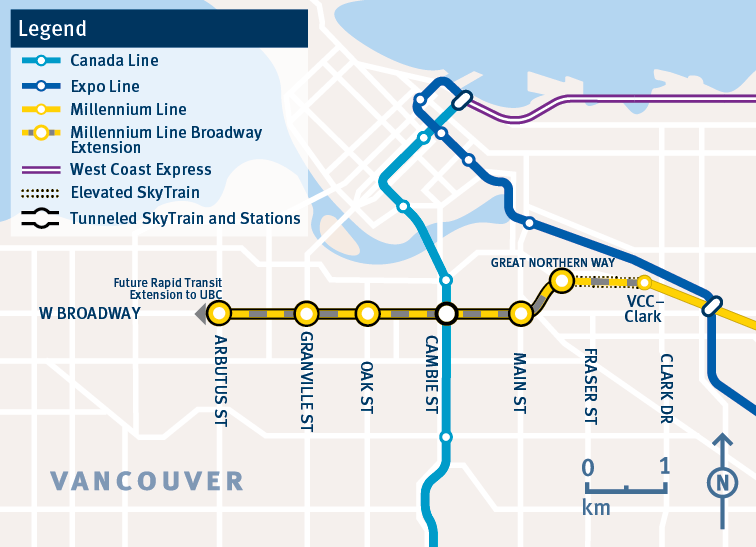
The biggest ticket item will undoubtedly be the SkyTrain Millennium Line extension west of VCC-Clark along Broadway. The extension will largely follow the tracks of the Route 99 B Line–the busiest bus route in North America–except it will primarily be constructed underground. The extension will add six stops and six kilometers to the Millennium Line in addition to creating a new transfer opportunity with the Canada Line. Eventually, the line will be extended as far as University of British Columbia on the edge of the Strait of Georgia. TransLink will also purchase additional rail vehicles to increase capacity on the Expo and Millennium Lines generally.
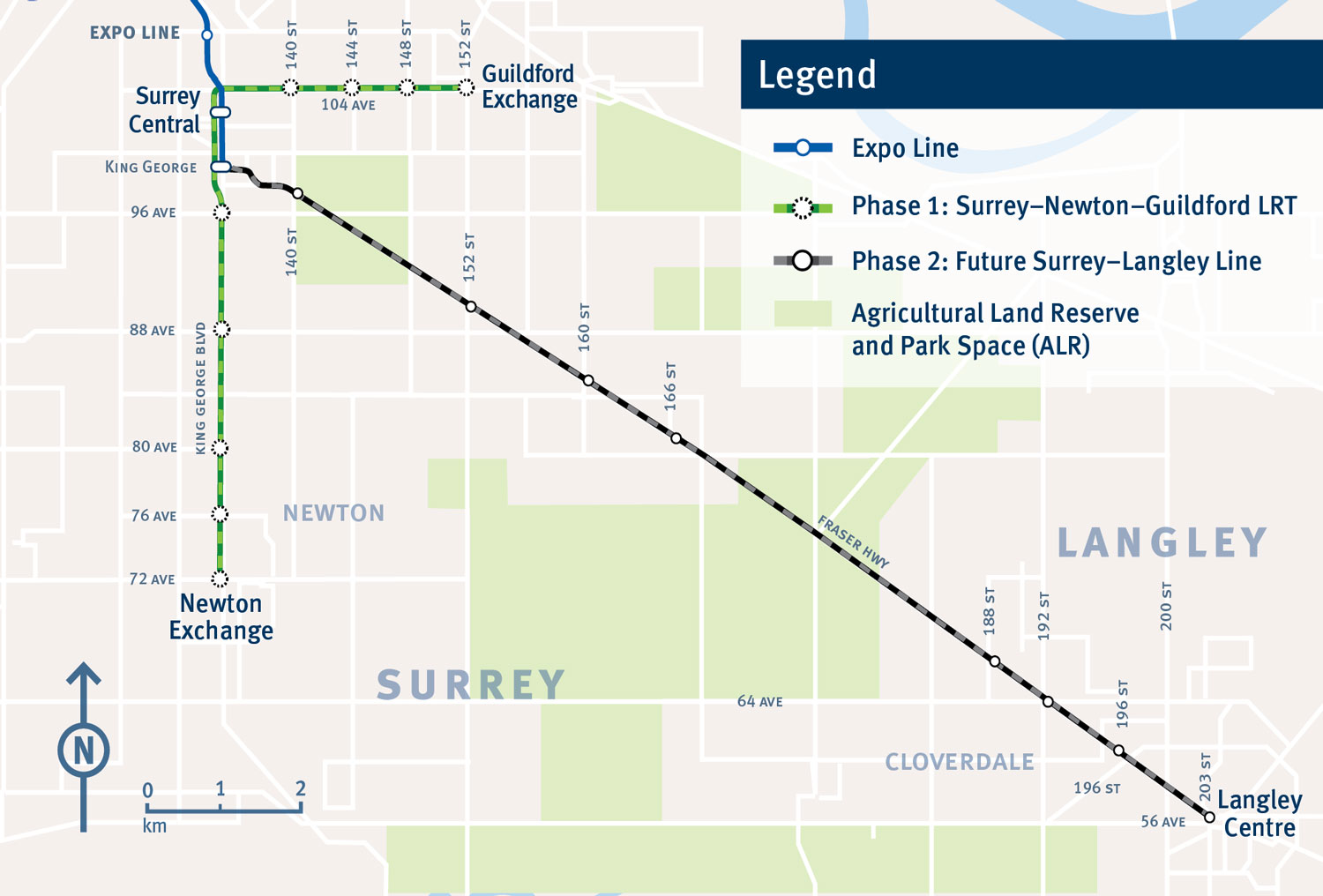
In Surrey, TransLink will build out the Surrey-Newtown-Guilford light rail line, which will connect to the Expo Line that terminates in central Surrey. The light rail line is planned to be primarily constructed at-grade and provide 11 stops on a 10-kilometer corridor. A future project would put rapid transit down the Fraser Highway to Langley.
Today, we’re pleased to announce the largest funding announcement ever in BC! The Mayors’ Vision will ensure the effective, efficient movement of people and goods, and maintain our status as one of the world’s most livable cities. https://t.co/BtP2fyMEFQ ^sk pic.twitter.com/1tuhW56MLc
— TransLink BC (@TransLink) March 16, 2018
On top of these major projects, TransLink will rollout an 8% increase in bus service across the network to address crowding, improve frequency, and add service to new areas. The funding plan will also help deliver new and improved sidewalks, bikeways, and multi-use paths, improving access to transit and connections in communities.
To pay for all of this, local communities in the Lower Mainland will cobble together 20% of the total cost through a variety of sources.
TransLink is banking on higher ridership to provide $1.6 billion in additional fare revenue and system efficiencies. The transit agency will also increase fares by 2%, which will be passed on to riders. Property taxes will increase slightly next year by $5.50–yes, that’s not a misprint–for the average household yearly. TransLink will make additional revenue from targeted commercial opportunities associated with transit facilities. And, impact fees for new residential development will be imposed at a rate between $300 to $600 per dwelling unit in addition to modest increases in commercial parking taxes. The latter two revenue options will require legislative changes by the provincial government to facilitate them.
TransLink expects to break ground on the major transit projects as early as 2019 and could see the Surrey light rail line open in 2024 followed by the Millennium Line extension in 2025.
The featured image is courtesy of Governor Jay Inslee’s office.
High-Speed Rail in Cascadia Will Get a Deeper Look, Report Due Mid-2019
Stephen is a professional urban planner in Puget Sound with a passion for sustainable, livable, and diverse cities. He is especially interested in how policies, regulations, and programs can promote positive outcomes for communities. With stints in great cities like Bellingham and Cork, Stephen currently lives in Seattle. He primarily covers land use and transportation issues and has been with The Urbanist since 2014.

